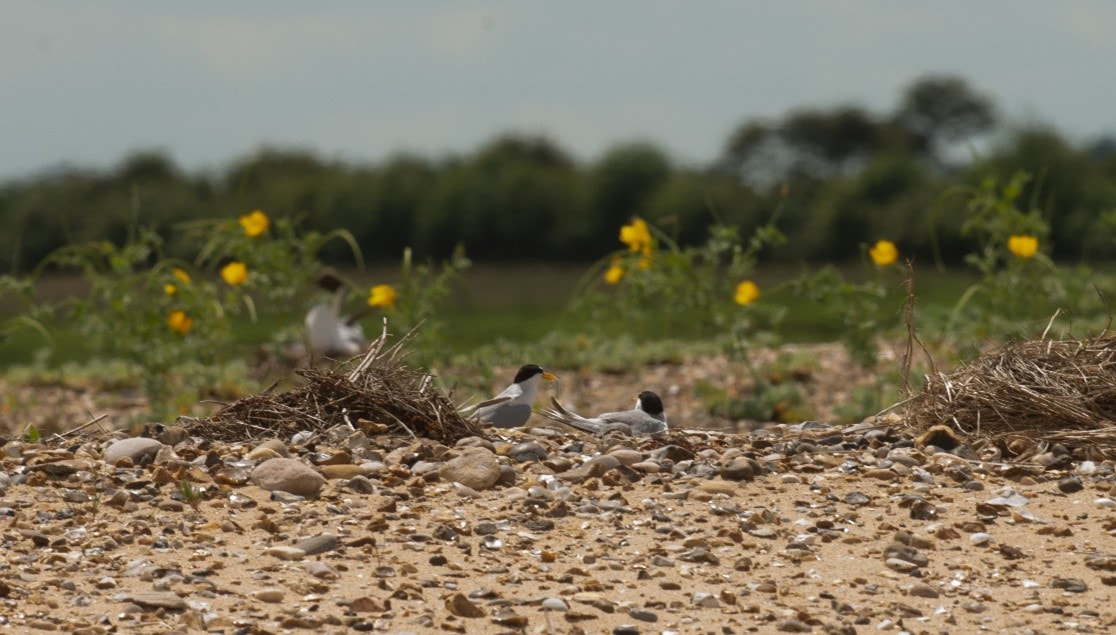|
Blog by Kieren Alexander, Site Manager for RSPB Old Hall Marshes After the successful recharge operation of Autumn/Winter 2021, attention has now turned to monitoring both the breeding colony present on the island and of course how the sand and shingle is moving and responding to the water. Thankfully its good news on both fronts! Starting with the little tern colony and other beach nesting bird that nest at Horsey. Little terns had a great year, with 22 nests fledging 19 young. There were 14 AON’s on the new recharge and a further 8 on the old recharge, this is an increase of 5 nests and 11 fledged juveniles from 2021 and a welcome return to form for this colony that decreased during 2020 and the impact of recreational disturbance. Ringed plovers did well, with all four pairs of young fledging at least one chick each. Oystercatchers stayed stable at 10 pairs and there were the normal low levels of black headed gulls. We are thankful to the environmental team at Tendring District council, in particularly Leon Woodrow for erecting signage and closely monitoring the species and any potential disturbance over the summer months. What has been impressive is the way the little terns immediately colonised the new area of beach, with many nests found on this new area, this shows the importance not just of safeguarding existing colonies from the impacts of climate change (which was one of the aims of the project) but also the vital need to create new habitats for our species. As well as the beach nesting colony we have also been monitoring the sand and shingle and how it is moving in response to tide and wind after being recharged. We are lucky at Horsey in that we have real life model that was created in the 1990’s in the form of the existing beach (to the west in the photo). So, we have a strong idea of how the material will respond. However, it is always nice to see the theory become reality. The GIF below shows the results of our monitoring since the material was deposited, so far, we have undertaken three monitoring flights and it shows the material initially being smoothed out and then gradually being pushed landwards towards the existing beach and then following a classic longshore drift movement to the west, making it a near mirror image of the existing beach.
Movement has been slow so far, but it is assumed that the material does a lot of its moving in the winter season, so the next results of the next two flights will be interesting to see and how it continues to respond. In case you missed it, here is the link to first part of Horsey Island Recharge Project blog, the second part and the third part.
0 Comments
Leave a Reply. |
Archives
April 2024
Categories
All
Photo credits: Oystercatcher by Katie Nethercoat (rspb-images.com)
LOTE Logo credits: Saskia Wischnewski |



